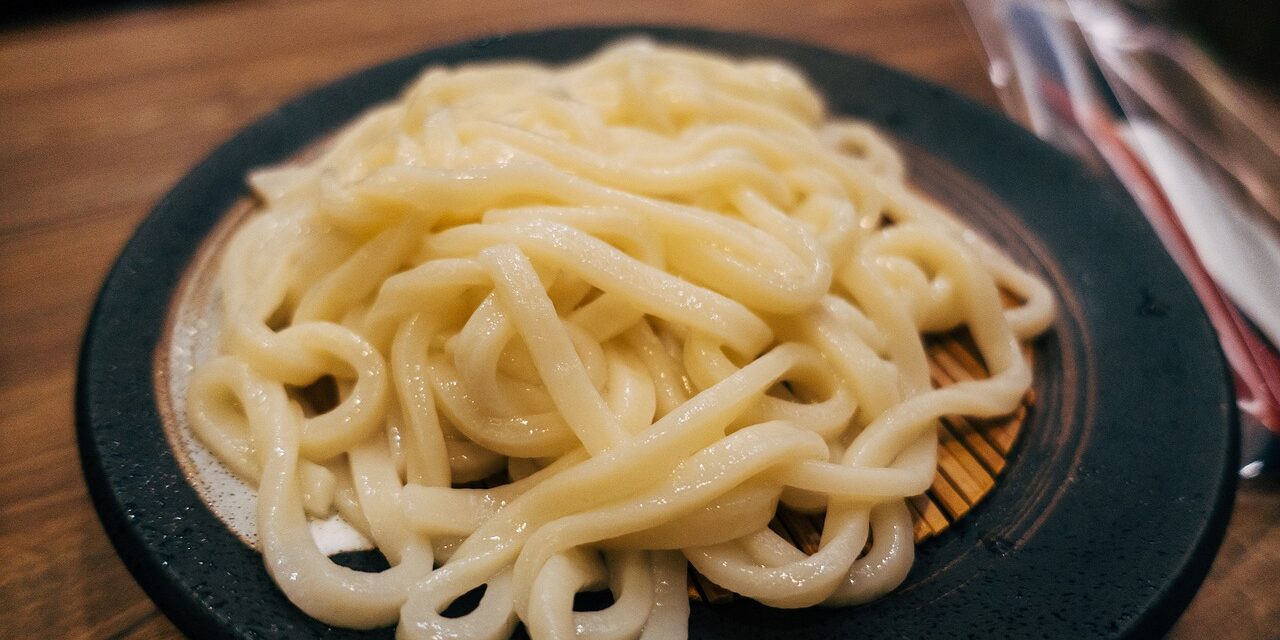Udon noodles, synonymous with the rich tapestry of Japanese culinary traditions, have captivated palates not only in Japan but also around the globe. These thick, chewy noodles made from wheat flour offer more than just a satisfying texture; they embody the cultural evolution and regional diversity inherent in Japanese cuisine. Their history, spanning centuries, is intimately linked to the broader narratives of trade, agricultural practices, and regional preferences within Japan.
The origins of udon are often traced back to the Heian period (794-1185). Initially introduced to Japan from China, similar noodles made from wheat flour were likely consumed by the Japanese aristocracy. Historical documents, including texts from the 9th century, suggest that the concept of making noodles from wheat flour was adopted and adapted into Japanese gastronomy, eventually evolving into the udon we recognize today. Notably, the term ‘udon’ itself is believed to have emerged from the Chinese word ‘yìndūn,’ referring to the thick noodles that were popular among Chinese communities.
By the Kamakura period (1185-1333), udon began to be embraced more broadly beyond aristocratic circles. It was during this time, amidst the rapid economic and social transformations that followed the establishment of the samurai class, that udon noodles started to gain traction among the common populace. Their affordability and the simplicity of their ingredients—primarily wheat flour, water, and salt—rendered them accessible, making udon a staple food across various social strata.
Historically significant is the period of the Edo (1603-1868), during which udon underwent considerable evolution. The establishment of the Edo period’s infrastructure, including roads that facilitated trade and commerce, allowed udon to flourish in urban centers such as Edo (modern-day Tokyo). Street vendors and eateries specializing in udon began to appear, further promoting its popularity. The rise of udon coincided with the establishment of regional styles, as distinct local ingredients and flavors found their way into the broth and garnishments, resulting in a plethora of variations.
For example, Sanuki udon from Kagawa Prefecture is among the most renowned styles, characterized by its firm and chewy texture. It is traditionally enjoyed with a simple dipping sauce made from soy sauce, mirin, and dashi. Conversely, Kyoto’s yudon emphasizes a lighter broth, often showcasing seasonal vegetables, reflecting the city’s sophisticated culinary heritage. As different regions began to adapt the basic udon recipe, the diversity of serving styles and flavors blossomed, illustrating the profound regionalism inherent in Japanese cuisine.
Furthermore, the post-World War II era marked significant changes in the production and consumption of udon noodles. The introduction of mechanized noodle-making processes allowed for the mass production of udon. By the 1960s, consumption statistics reflecting these developments illustrated a burgeoning appetite for noodles overall. According to data from the Ministry of Agriculture, Forestry and Fisheries of Japan, the consumption of noodles, including udon, skyrocketed, with udon accounting for approximately 10% of noodle sales. The convenience and versatility of udon facilitated its integration into contemporary living, making it a go-to meal for busy families and individuals.
In a broader context, udon serves as a reflection of Japan’s commitment to seasonal eating and appreciation for umami, one of the core tastes defining Japanese cuisine. Any bowl of udon provides an opportunity for chefs and home cooks alike to showcase seasonal ingredients, whether it be spring onions, tempura, or mushrooms. This emphasis on what is fresh and local aligns with Japan’s cultural ethos surrounding food—an ethos steeped in mindfulness and gratitude towards nature.
In conclusion, the history of udon noodles transcends mere culinary enjoyment; it encapsulates the resilience and adaptability of Japanese culture. From its humble beginnings influenced by Chinese cuisine to its status as a beloved dish characterized by regional diversity, udon embodies a narrative rich in tradition, adaptation, and innovation. As modern culinary practices continue to evolve, udon will undoubtedly remain a vital component of Japan’s cultural identity, inviting both tradition and modernity to coalesce in each delectable bowl.

